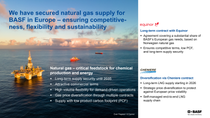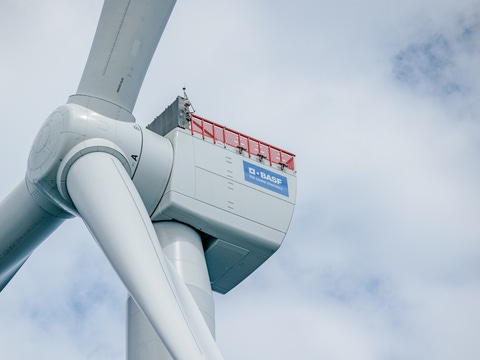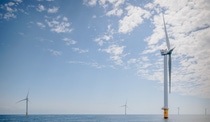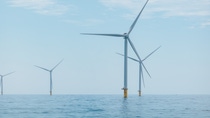BASF Renewable Energy GmbH
Energy for BASF: Reliable, Competitive, and Climate-Neutral
About us
BASF Renewable Energy GmbH is responsible for the procurement and trading of key energy sources for BASF – including electricity, gas, steam, and the trading of CO₂ certificates. We ensure that the energy needs of BASF sites are reliably met at competitive prices – and that future energy supply is consistently aligned with the goal of climate neutrality. In doing so, we are expanding our own generation capacities together with partners from the energy sector and entering into long-term supply agreements for electricity, gas, and steam.
A strategic and cost-effective energy supply is essential to BASF’s global competitiveness.
BASF Climate Goals
BASF aims to achieve net-zero CO₂ emissions by 2050 – an ambitious goal. By 2030, we plan to reduce our CO₂ emissions by 25 percent compared to 2018. This means our demand for renewable energy will increase significantly in the coming years. To reliably supply our European sites with energy, we will need a steadily growing share of electricity from renewable sources – and, during the transition, continued access to natural gas with a reduced carbon footprint. To meet this demand, BASF relies on a diversified procurement portfolio for all energy carriers.
The Energy Concept at BASF
BASF Renewable Energy GmbH is the central platform for BASF’s global energy management. It ensures a secure and efficient supply of energy for BASF’s production sites, manages procurement and trading on international energy markets, and optimizes the distribution and balancing of electricity, gas and other key energy sources.
Renewable Energy at BASF
Around half of BASF’s Scope 1 and 2 emissions stem from energy use. Transitioning from fossil to renewable energy sources is therefore essential.
In 2024, renewables covered 26% of BASF’s global electricity consumption (2023: 20%). As we electrify steam generation and shift from gas-based to low-emission, electricity-based processes, our power demand will rise. BASF aims to source more than 60% of its electricity from renewables by 2030.
To reach this goal, BASF follows a make-and-buy strategy, combining investments in its own renewable assets with long-term purchase agreements and renewable energy certificates.
In 2024, BASF’s renewable portfolio expanded significantly. The Hollandse Kust Zuid offshore wind farm – a joint project with Vattenfall and Allianz – became fully operational. With 139 turbines and a capacity of 1.5 gigawatts, it is among the largest subsidy-free offshore wind farms worldwide. In China, BASF and Mingyang are developing a 500-megawatt offshore wind farm in Zhanjiang, scheduled to start up in 2025. From then on, the new Zhanjiang Verbund site will operate entirely on renewable electricity. In North America, BASF secured around 150 megawatts of solar capacity through virtual power purchase agreements and an additional 110 megawatts of solar and wind capacity for its sites in Texas.
In 2024, the carbon footprint of purchased electricity averaged 0.20 metric tons of CO₂ per megawatt-hour, reducing BASF’s greenhouse gas emissions by around one million metric tons of CO₂.
Natural Gas – A Key Transitional Energy Source

While renewable energy is at the core of BASF’s transformation, natural gas remains a vital bridge technology. This is illustrated by the example of our European gas supply, where BASF has established a flexible and robust procurement strategy based on two cornerstone supply agreements to strengthen competitiveness and energy resilience.
The first agreement, with Equinor, starts in October 2025 and provides up to 23 terawatt-hours of Norwegian natural gas per year over ten years. The contract secures long-term, lower-carbon supply for BASF’s major sites in Germany and Belgium.
The second agreement, with Cheniere, begins in mid-2026 and runs through 2043. It supplies up to 12 terawatt-hours of liquefied natural gas (LNG) annually, introducing price diversification through Henry Hub indexing and full control over the LNG supply chain.
Together, these partnerships ensure secure, flexible and lower-carbon energy supply, balancing reliability, cost efficiency and sustainability – and providing a clear competitive advantage for BASF in Europe.
.jpg)



